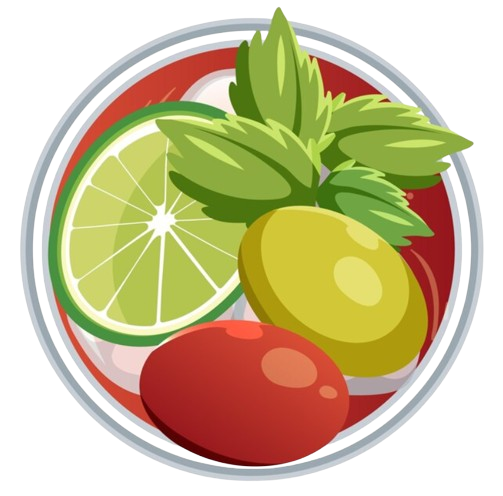How to Prepare and Cut Fruit

Absolutely, even the most creative individuals in various fields rely on fundamental techniques. Much like artists preparing their canvases or creating basic visual effects, the culinary world echoes this sentiment. While cooking embraces boundless creativity and personal expression, certain foundational preparation steps—such as zesting a lemon or pitting a cherry—remain constant, regardless of whether one is a seasoned chef or a novice cook.
In this comprehensive guide, we’ll walk you through a series of techniques essential for fruit preparation. Starting with the nuances of juicing citrus fruits, we’ll delve into various methods and tips that prove invaluable when handling different types of fruits. These step-by-step instructions are designed to equip you with the expertise needed to navigate the intricate world of fruit preparation, ensuring you master the basics and move toward culinary finesse.
Cooking: Dive into the essentials of fundamental cooking techniques, helping you hone your culinary skills and explore diverse culinary creations. Fruit Trees: Discover the expansive array of fruit trees, their habitats, and where they thrive on our dedicated Fruit Trees page for a deeper understanding of fruit diversity.
Juicing citrus fruits is a straightforward process that can yield refreshing and nutritious results, especially with fruits like oranges, grapefruits, and lemons.
Freshly squeezed juice offers a fantastic boost to your well-being. Although we’re accustomed to purchasing juice in cartons, juicing citrus yourself is relatively simple, even if you’re just waking up.
Here’s a step-by-step guide:
- Place the fruit on a cutting board and cut it in half. Remove any visible seeds using the tip of your knife.
- To extract the juice, you can either use a citrus reamer or simply squeeze the fruit tightly by hand, directing the juice into a small glass or dish. Ensure you remove any remaining seeds from the juice.
Zesting is another useful technique frequently employed with citrus fruits, adding a burst of flavor to many recipes. Here’s how you can zest:
- Hold the fruit securely in one hand and use the other hand to remove the colored portion of the peel.
- You can make zest strips using a vegetable peeler or opt for smaller zest pieces using a zester or box grater for an even finer zest.
Remember, when zesting, ensure you only remove the outermost layer of peel, avoiding the bitter white pith beneath.
If you’re curious about pitting fruits, like nectarines, for instance, the next section will guide you through that process.
Not finding the information you need? Consider exploring these topics:
- Cooking: Discover various basic cooking techniques to enhance your culinary skills.
- Fruit Trees: Explore the diversity of fruit trees and their typical growth habitats on our Fruit Trees page.
How to Pit a Nectarine
| Try It! Here is a recipe from our collection that uses nectarines: Summer Fruits with Peanut Butter Honey Dip |
When using a nectarine in a recipe you have to first remove the stone.
- Insert knife blade into stem end of nectarine; slice into halves lengthwise to the pit, turning nectarine while slicing.
- Remove knife blade; twist halves to pull apart.
- Remove pit from nectarine using tip of paring knife; discard.

Taking care, remove the pit
with the tip of a knife.
Cherries are another fruit that need to be pitted before used in a recipe. Find out how on the next page.
Not what you’re looking for? Try these:
- Cooking: Learn the ins and outs of some basic cooking techniques in this helpful article.
- Fruit Trees: Discover the wide variety of fruit trees and where they typically grow on our Fruit Trees page.
How to Pit Cherries
Cherries can be quite delicious, but their stones can get in the way. Here’s how to pit them:
- Slice an “X” into ends of cherries with paring knife.
- Squeeze out cherry pits with thumb and forefinger.

Gently squeeze the pit out of the cherry.
Though they are harder to find and might cost a little more, tropical fruits offer wide array of dazzling flavors. Learn how to prepare papaya in the next section.
Not what you’re looking for? Try these:
- Cooking: Learn the ins and outs of some basic cooking techniques in this helpful article.
- Fruit Trees: Discover the wide variety of fruit trees and where they typically grow on our Fruit Trees page.
How to Prepare Papaya
The papaya is native to the Western Hemisphere, most likely the Caribbean, but early in its history, it spread to other subtropical areas.
The fruits, which are shaped like elongated melons or pears, vary in size from about 1/2 pound to 15 pounds.
- Slice papaya lengthwise in half on cutting board. With large spoon, scoop out seeds; discard.
- Remove peel from papaya using vegetable peeler or paring knife.

Peel the papaya using a vegetable
peeler or paring knife.
Find out more about how to use the avocado in cooking on the next page.
Not what you’re looking for? Try these:
- Cooking: Learn the ins and outs of some basic cooking techniques in this helpful article.
- Fruit Trees: Discover the wide variety of fruit trees and where they typically grow on our Fruit Trees page.
How to Prepare Avocado
Avocados, native to Mexico, are widely loved
by Americans for their use in guacamole.
They have a rich, butter-like texture and a
mild, almost nutty flavor.
- Place avocado on cutting board. Insert knife into stem end; slice into halves lengthwise to the pit, turning avocado while slicing.

Turn the avocado around the knife,
thereby slicing it in half. - Remove knife blade; twist both halves to pull apart.

Twist the halves of the avocado
and pull them apart. - Press knife blade into pit; twist knife to pull pit free from avocado.

Lodge the knife blade inside the
avocado pit and pull it free. - Sprinkle avocado with lemon juice to prevent discoloration.
- For slices, cut avocado halves lengthwise on cutting board. Starting at stem end, carefully peel skin away from each avocado piece. Slice to desired size.
- If you will be mashing the avocado, perhaps for guacamole, there’s no need to be so precise. Simply scoop avocado meat out of skin using a large spoon.
Now that you know how to prepare your favorite fruits, you’re ready to use them in all kinds of recipes, from main entrees to desserts.



